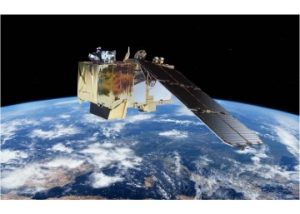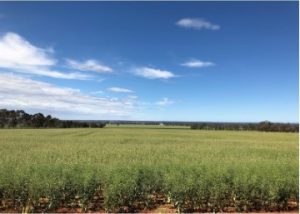Crop Water Use Explained.
Crop water use explained. The term “crop water use”, as presented in the Implexx Crop Water Use Forecast, is the amount of water that may be required by an area of crop. Crop water use is an estimate of the amount of water required by a crop if all other conditions are optimal. The crop water use is an estimate of the potential amount of water that may be required by a crop.
How is crop water use estimated?
 The Implexx Crop Water Use Forecast utilises remote sensing via advanced satellite technology to estimate crop water use.
The Implexx Crop Water Use Forecast utilises remote sensing via advanced satellite technology to estimate crop water use.
The European Space Agency’s Sentinel 2 Satellites measures light reflected from the crop’s canopy. The Sentinenl 2 satellites captures an area approximately every 2 to 10 days depending on location. Therefore, any changes to the crop, such as canopy growth, can be regularly updated in the Implexx Crop Water Use Forecast algorithm.
Light is measured across various wavebands in the visible and infrared wavelengths. Information from the reflected light is then used in a series of algorithms and equations to estimate crop water use.
The crop water use algorithm has been developed by scientists at Implexx following many years of research, trials and tests. The many indices of reflected light are entered into a proprietary algorithm that outputs an estimate of crop water use.
What scale or area does the crop water use estimate apply?
 The Implexx Crop Water Use Forecast is most accurate when it is applied at a scale of at least a hectare or a couple of acres. The Forecast is more accurate at larger scales. Preferably, a few hectares or many acres should be chosen as the sample area for the Implexx Crop Water Use Forecast.
The Implexx Crop Water Use Forecast is most accurate when it is applied at a scale of at least a hectare or a couple of acres. The Forecast is more accurate at larger scales. Preferably, a few hectares or many acres should be chosen as the sample area for the Implexx Crop Water Use Forecast.
The area of the target crop should be contiguous and not incorporate bare paddocks, water bodies, remnant vegetation, buildings, or other larger non-target items.
The Implexx Crop Water Use Forecast is accurate if inter-rows or non-target crop understorey is incorporated into the satellite capture.
How can I measure crop water use?
Crop water use can be directly measured with the Implexx Sap Flow Sensor. Also, known as a crop water use sensor, it can measure any plant with a stem or trunk diameter of a least 1 cm (0.4 in). Further information on the Implexx Sap Flow Sensor can be found here.
Millimetres and Inches – what does this mean?
Crop water use in the Forecast is expressed as millimetres (mm) or inches (in) per hour or day. Confusingly, mm and in are units of length so how is this related to crop water use?
A mm is also defined as 1 litre of water per 1 m2 of ground or crop area. So, a crop water use estimate of 1 mm per day means that 1 litre of water was transferred to the atmosphere from 1 m2 of ground or crop area.
Millimetres and inches can be converted and interchanged so interpretation can be made on the same units of measurement. Here are the conversions:
Millimetres (mm) = Litres / Area
Millimetres = 25.4*Inches
Inches = 0.0394*Millimetres
Further information
- The Implexx Crop Water Use Forecast
- Crop water budget explained
- ETo reference crop evapotranspiration explained
- Implexx Sap Flow Sensor
